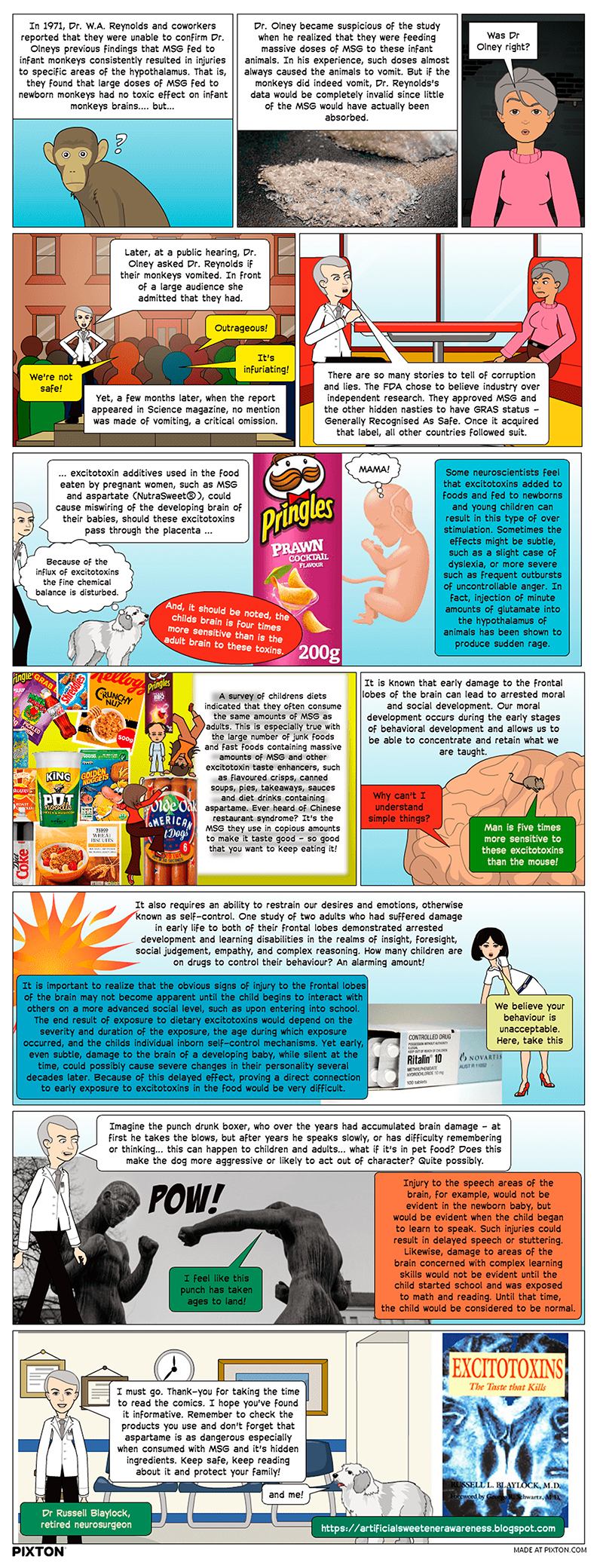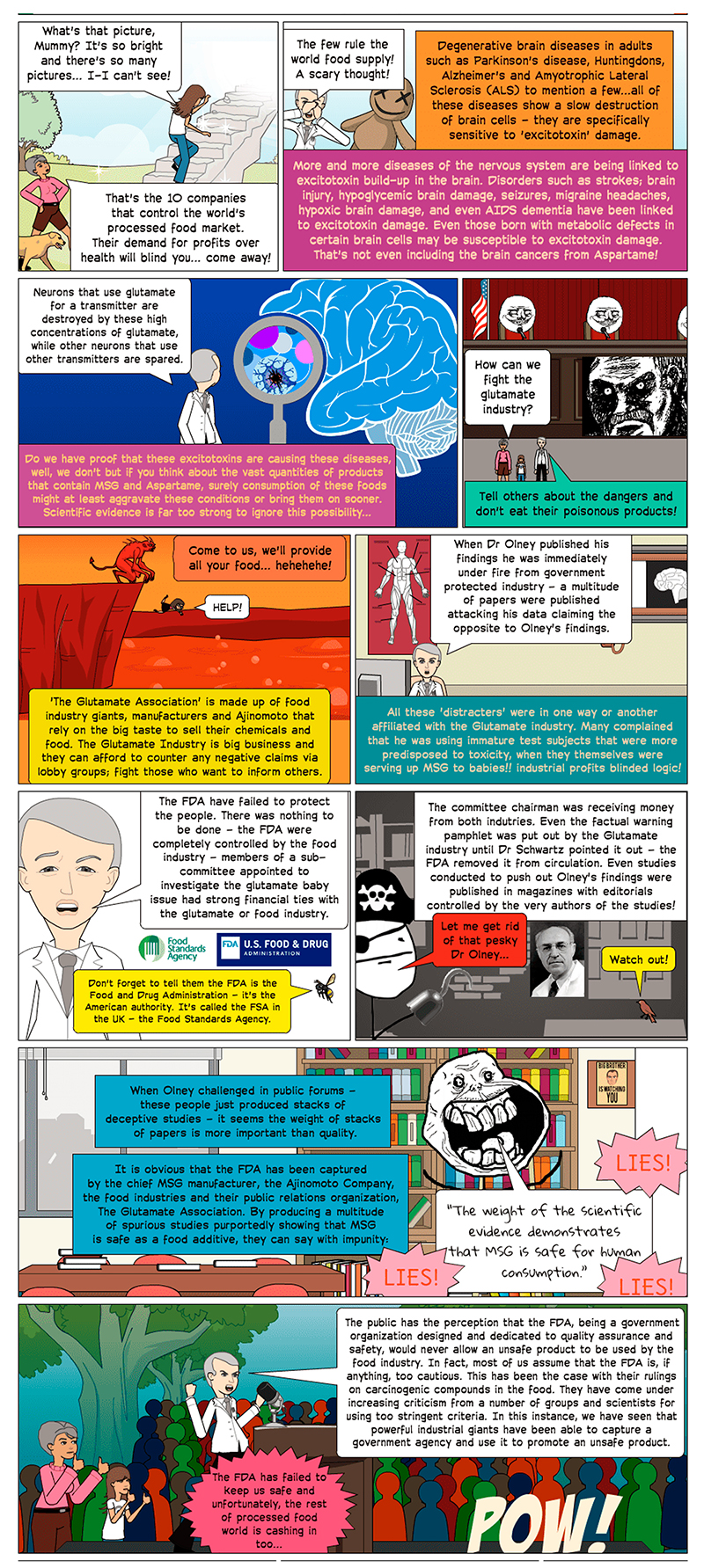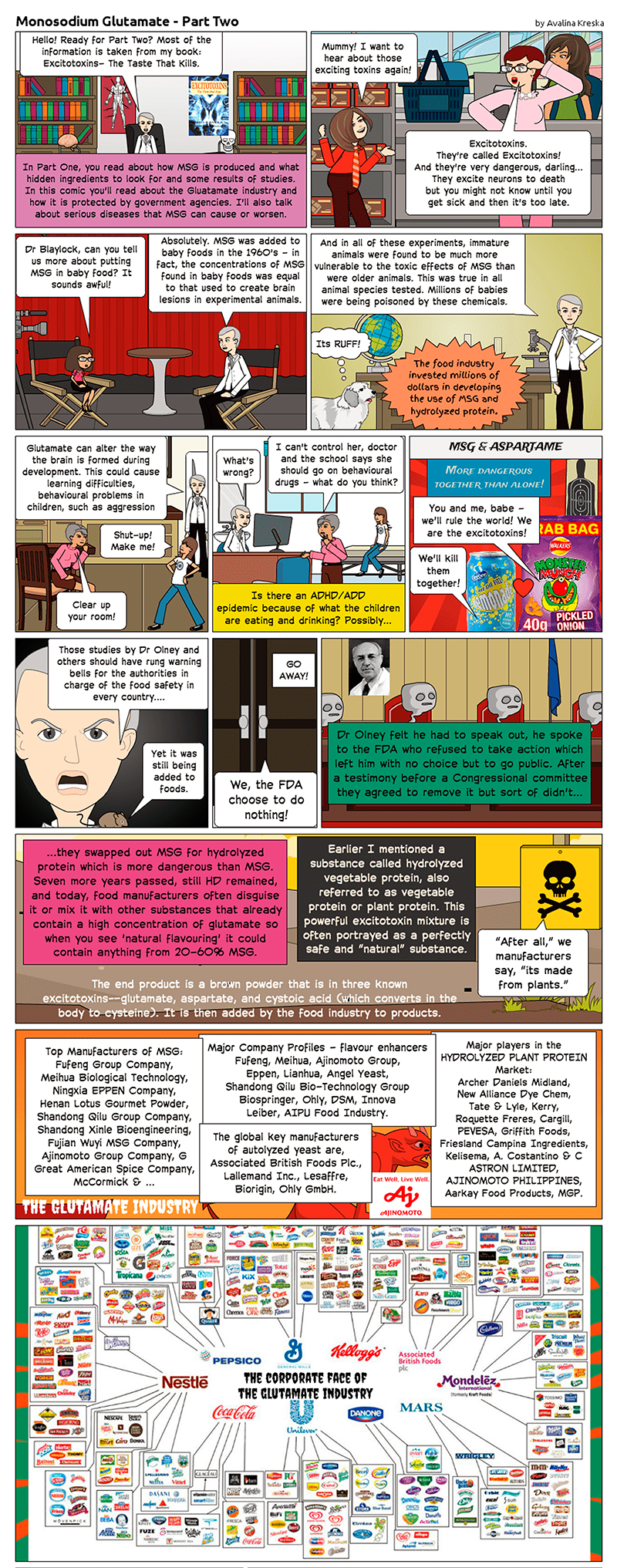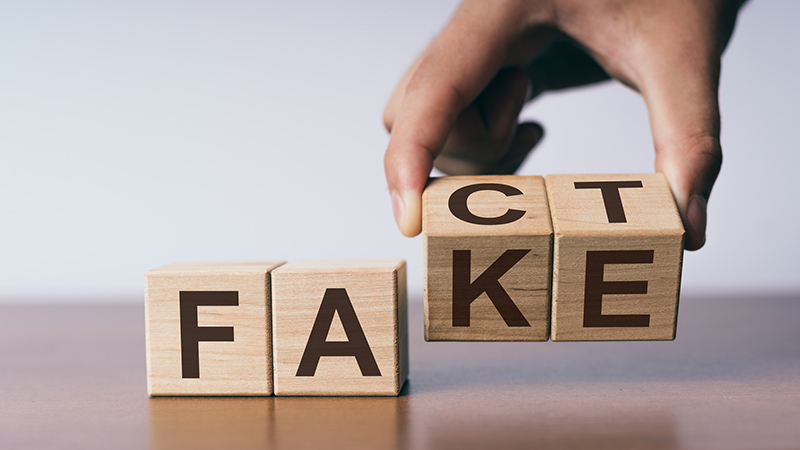There’s a world of writers who turn out propaganda pieces on the safety of MSG. They’re much like the “researchers” who authored the MSG-is-safe studies for the International Glutamate Technical Committee in the 1990s. These were individuals with little or no obvious connection to one another, affiliated with variety of universities and medical schools, who had no history of studying the safety of MSG and had no misgivings about using excitotoxic aspartame in their placebos.
So, it’s only natural to wonder if John Moody’s article “Yeast Extract: Not MSG But Is It Safe?” in The Healthy Home Economist was designed to be MSG-is-safe propaganda. It sure looked that way, but it also sent a warning to consumers that yeast extract contains the same toxic free glutamate that’s in MSG.
To understand the toxicity of yeast extract, you have to understand the basics of toxic glutamate found in food.
Glutamate must be free to be harmful, meaning it can’t exist as part of a protein. And toxic free glutamate found in food will always have been manufactured.
You can make/produce free glutamate (glutamate outside of protein) using carefully selected genetically modified bacteria. Feed the bacteria on some starchy stuff like sugar, and they secrete glutamate through their cell walls. That’s pretty much how the glutamate in MSG is made in Ajinomoto’s plant in Eddyville Iowa.
You can also free glutamate from protein. Begin with something that contains protein — almost any meat, grain, diary product, fruit or vegetable will contain at least some small amount of glutamate. Then, choose your method: 1) extract glutamate from protein, 2) use hydrolysis, autolysis, enzymes, acids or fermentation to break protein into individual amino acids (which would include glutamate), or apply high heat to protein.
All glutamate made/produced by man plus that which has been fermented contains D-glutamate, pyroglutamate and other unwanted by-products of manufacture (impurities which industry has been unable to remove) as well as the desired L-glutamate. In contrast, the glutamate in unadulterated fruits, grains, vegetables, and in the human body, which wouldn’t be manufactured, is L-glutamate only.
To be toxic, free glutamate has to 1) be present in excess – more than the healthy body needs for normal body function, or 2) act as a neurotransmitter, overstimulating and damaging glutamate receptors for some weak area in an individual’s body, the heart, lungs, or stomach for example.
Yeast extract contains toxic free glutamate.
Yeast extract contributes to accumulation of toxic free glutamate in two ways. First, yeast extract itself will contain toxic free glutamate. Moreover, yeast and yeast extract can also interact with other ingredients, causing the protein in those other ingredients to break down and release glutamate.
The way that the yeast extract is produced will vary from one manufacturer to another, but all break the protein found in yeast into free amino acids – one of which will be glutamate. Following are various descriptions of how that’s done:
1: Food Navigator-asia.com: https://www.foodnavigator-asia.com/Article/2019/09/25/Clean-label-less-sodium-and-vegan-Yeast-extract-specialist-company-Angel-Yeast-names-three-mega-trends-driving-the-industry#
“Angel Yeast’s yeast extract products are obtained from molasses-cultured yeast, which are autolyzed to obtain the extract and made into pastes or powders.”
2: European Association for Specialty Yeast Products:
http://www.yeastextract.info/yeast-extract/how-it-s-made
“Yeast extract is … made from natural bakers’ or brewers’ yeast. First sugar is added so that the yeast can multiply. Then enzymes in the yeast break down the proteins present in the yeast into smaller components and make the cell walls permeable. Finally the components present in the yeast cell – the yeast extract – are separated from the surrounding wall and dried.”
3: Biospringer: https://biospringer.com/en/explore-yeast-extract/yeast-extract/production-process/
“Yeast is a microscopic unicellular fungus that has been living on Earth for millions of years. Like any other cell, yeast is made of proteins, amino acids, vitamins and minerals gathered within the cell walls.”
“Yeast extract is simply the yeast content without the cell wall, making it a natural origin ingredient. Its production consists of 3 main steps:
Fermentation
Breaking of the yeast cell (also known as autolysis)
Separation”
4: By Elea Carey for Healthline: https://www.healthline.com/health/food-nutrition/is-yeast-extract-bad-for-me#1″ https://www.healthline.com/health/food-nutrition/is-yeast-extract-bad-for-me#1
“There are two kinds of yeast extract, autolyzed and hydrolyzed. In both, the cell walls are discarded and the contents of the cell are combined. In autolyzed yeast, the enzymes found in the yeast itself are used to break down the proteins. In hydrolyzed yeast, these enzymes are added to the yeast.”
Does yeast extract contain enough free glutamate to cause brain damage or adverse reactions?
If yeast extract was the only source of free glutamate ingested, toxicity would depend on the amount of free glutamate in the particular product ingested, and the sensitivity of the person ingesting it. There are glutamate-sensitive people who react to yeast extract.
But in real life one helping of yeast extract isn’t going to be ingested in isolation. Combined with other sources of glutamate in the diet, yeast extract increases the likelihood of brain damage and adverse reactions.
About MSG-is-safe propaganda
John Moody’s article fits the present propaganda model perfectly. It doesn’t shout out that MSG is harmless, but in several sections feel-good words are paired with the words glutamate, MSG or umami.
“Why we love glutamate”
“the presence of natural glutamates”
“Glutamates… trigger a response in our brains that make us enjoy our food.”
“Glutamates don’t just taste good, they ARE good”
“essential for life itself”
“…glutamates are naturally occurring in a wide range of foods, especially if fermented or slowly cooked or simmered. Also, traditional cultures sometimes prepared foods in such a way to purposefully INCREASE the concentration of glutamates. Clearly, ancestral societies recognized the benefits of natural glutamate in the diet.”
And then there are even more clever sections that the casual reader might think speak of the hazards of glutamates, but actually minimize them: 1) it would be unnatural to ingest too much MSG; 2) it’s processed foods that are the problem if there is one, not MSG; 3) there are a few risks associated with ingestion of MSG, but lots of foods can cause them, and 4) natural forms of glutamates are not a concern.
And finally, at the end of the paper, where psychologists say it will have the longest lasting impression, are the words, “For healthy individuals, glutamates play a vital role both in good health and good hearth (food).”
If you have questions or comments, we’d love to hear from you. If you have hints for others on how to avoid exposure to MfG, send them along, too, and we’ll put them up on Facebook. Or you can reach us at questionsaboutmsg@gmail.com and follow us on Twitter @truthlabeling.







